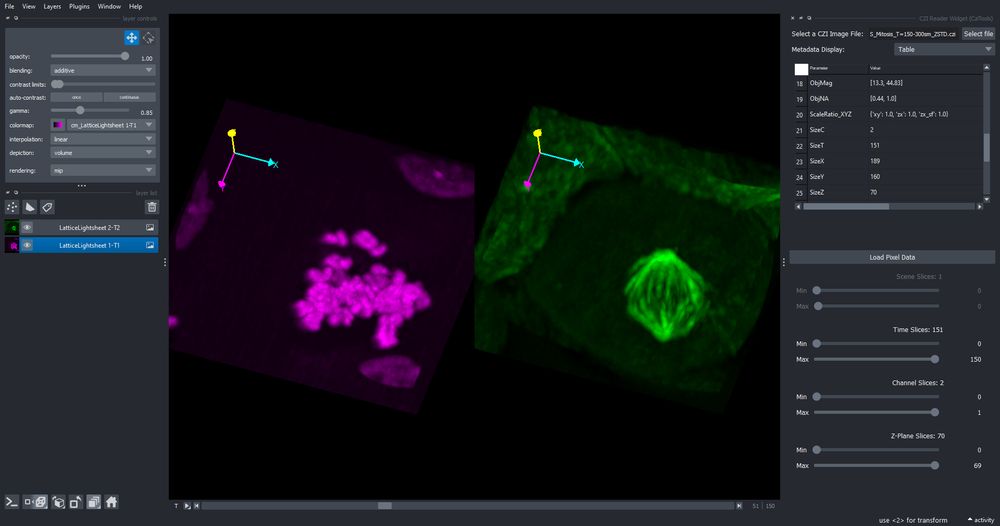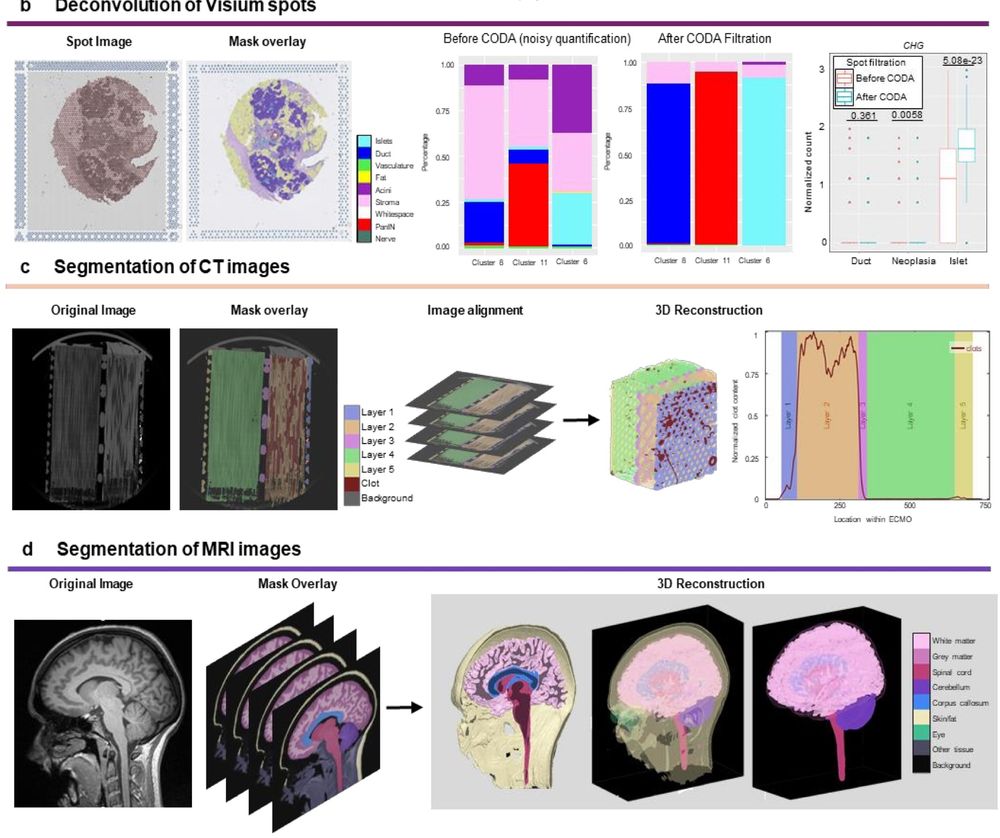Science is like magic but real.
So I decided to make a little UI for some of the code created there (just to play around), which one can easily show to interested colleagues 😜.
CZI --> OME-ZARR with some options ...
By far not perfect but still fun!
So I decided to make a little UI for some of the code created there (just to play around), which one can easily show to interested colleagues 😜.
CZI --> OME-ZARR with some options ...
By far not perfect but still fun!
Voting is open until Nov 21, 2025. ⌛

Voting is open until Nov 21, 2025. ⌛
what would you do when you have access to the pixel stream from @zeiss-microscopy.bsky.social inside @napari.org?
Btw, it works as well in Fiji&ImageJ :-)
Sidenote: Experiments started from "outside" do not update the ZEN UI. But they are executed by ZENservice.
what would you do when you have access to the pixel stream from @zeiss-microscopy.bsky.social inside @napari.org?
Btw, it works as well in Fiji&ImageJ :-)
Sidenote: Experiments started from "outside" do not update the ZEN UI. But they are executed by ZENservice.
If you want more info check
github.com/zeiss-micros...
github.com/sebi06/ZEN_P...
If you want more info check
github.com/zeiss-micros...
github.com/sebi06/ZEN_P...

www.zeiss.ch/mikroskopie/...
The code for the ZEN API & Python related topics can be found here:
github.com/sebi06/ZEN_P...

www.zeiss.ch/mikroskopie/...
The code for the ZEN API & Python related topics can be found here:
github.com/sebi06/ZEN_P...

For a modest fee, I will send them Paracetamol, which is NHS-approved for pregnancy and for children.
You can even get it combined with decongestant to make a tasty hot lemon drink.
For a modest fee, I will send them Paracetamol, which is NHS-approved for pregnancy and for children.
You can even get it combined with decongestant to make a tasty hot lemon drink.
Are you ready to automate your next large scale microscopy experiment and work smarter, not harder?
Join us for the Smart Microscopy workshop organized by EPFL Bio-Imaging Platform (Lausanne) and @zeiss-microscopy.bsky.social
www.zeiss.ch/mikroskopie/...
Are you ready to automate your next large scale microscopy experiment and work smarter, not harder?
Join us for the Smart Microscopy workshop organized by EPFL Bio-Imaging Platform (Lausanne) and @zeiss-microscopy.bsky.social
www.zeiss.ch/mikroskopie/...
As a person creating AI software tools I hope that is not true but I am not so sure anymore ...

As a person creating AI software tools I hope that is not true but I am not so sure anymore ...

doi.org/10.5281/zeno...
We unpick the tech industry’s marketing, hype, & harm; and we argue for safeguarding higher education, critical
thinking, expertise, academic freedom, & scientific integrity.
1/n




doi.org/10.5281/zeno...
We unpick the tech industry’s marketing, hype, & harm; and we argue for safeguarding higher education, critical
thinking, expertise, academic freedom, & scientific integrity.
1/n
📄 joss.theoj.org/papers/10.2110… (1/3)

📄 joss.theoj.org/papers/10.2110… (1/3)

- open complete CZI images or subsets
- read CZI metadata
pypi.org/project/napa...
or
github.com/sebi06/napar...

- open complete CZI images or subsets
- read CZI metadata
pypi.org/project/napa...
or
github.com/sebi06/napar...
It contains sample data, allows to read CZI metadata and can read CZI images (or parts of it) by using the sliders to crop what should be read.
Still quite some things to improve ...

It contains sample data, allows to read CZI metadata and can read CZI images (or parts of it) by using the sliders to crop what should be read.
Still quite some things to improve ...
CODAvision enhances the usability of the CODA algorithm to automatically generating quantitative results and comprehensive reports.
More here: www.biorxiv.org/content/10.1...

CODAvision enhances the usability of the CODA algorithm to automatically generating quantitative results and comprehensive reports.
More here: www.biorxiv.org/content/10.1...
youtube.com/shorts/EP5pd...


